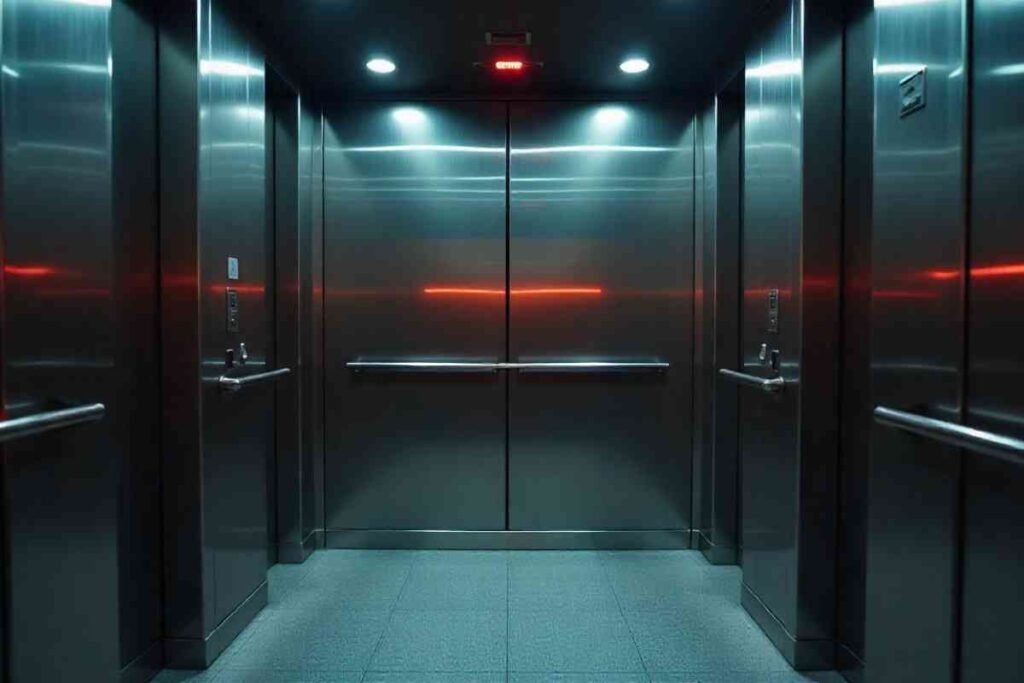An Automatic Rescue Device is a modern safety system designed for elevators. It ensures passengers are not trapped during sudden power failures.
This safety guide explains how the Automatic Rescue Device works in real life situations. You’ll learn why it is essential for both residential and commercial buildings.
Reading this article will give you practical knowledge and confidence about elevator safety. Discover how innovation in rescue devices can protect lives every day.
Understanding the Automatic Rescue Device

The Automatic Rescue Device ARD is a modern safety system designed to protect passengers during elevator power failures.It automatically brings the elevator to the nearest floor allowing people to exit safely without panic or risk.
This device works independently powered by backup energy ensuring reliability even during unexpected blackouts. Its advanced technology detects faults instantly and activates the rescue process within seconds.
By using an Automatic Rescue Device buildings enhance passenger safety and create a more secure elevator experience.
What is an Automatic Rescue Device?
An automatic rescue device often called ARD is a safety mechanism integrated into modern elevators to ensure that passengers are not left stranded during emergencies.
When the main power supply fails the ARD immediately activates using its backup power source to safely move the elevator car to the nearest floor. Once the car aligns with the landing the doors open automatically allowing passengers to exit securely.
This technology is not directly visible to passengers as it is embedded in the elevator’s control system but its role becomes crucial the moment an unexpected event occurs.
Without it elevators would remain motionless during outages creating dangerous and distressing scenarios for passengers. With ARD the elevator industry has made a leap forward in building safe and resilient transport systems.
Why Do Elevators Need ARD?
Elevators serve millions of people every day especially in high-rise cities where vertical transportation is part of daily life. Power failures however, are unpredictable.
Without a backup rescue mechanism passengers can become trapped for extended periods leading to safety risks medical emergencies and widespread panic.
The automatic rescue device eliminates these risks by ensuring a safe and efficient exit. It is not just about mechanical convenience but about preserving human safety dignity and confidence in using elevators.
How Does the Automatic Rescue Device Work?
The operation of an automatic rescue device is based on advanced electronics monitoring and power backup systems. Its functioning can be broken down into key stages that ensure a safe rescue process.
Emergency Power Activation
When the primary power supply is interrupted the ARD immediately activates its secondary power source usually a battery system.
This emergency supply powers essential elevator functions required for bringing the cabin to a safe position. Unlike general power backup systems ARD is programmed exclusively to prioritize passenger evacuation.
Intelligent Monitoring
The lift rescue system is designed with intelligent monitoring that continuously checks the power status and elevator’s operational condition.
The instant a disruption is detected the system initiates the rescue process. This includes checking the elevator’s current location deciding the safest landing floor and preparing the car for movement.
Automatic Floor Leveling
Floor leveling is a critical part of passenger evacuation. The ARD ensures the cabin aligns with the nearest floor precisely so passengers can exit without encountering dangerous gaps or uneven spaces. This accuracy prevents tripping hazards and reassures passengers during an already stressful situation.
Communication Support
Modern ARD systems are integrated with elevator safety systems that also support emergency communication. Passengers can connect with building security or external emergency services through intercoms or alarms. This two way communication keeps passengers calm while the evacuation is in progress.
Integration with Building Safety Systems
Advanced ARDs work seamlessly with building management systems. They coordinate with fire alarms emergency lighting and other building-wide security measures. This integration ensures that the rescue process is synchronized with all emergency protocols in the building.
Benefits of the Automatic Rescue Device
The benefits of the Automatic Rescue Device include providing safety during power failures by moving the elevator to the nearest floor. It ensures passengers can exit quickly and safely reducing panic and enhancing overall elevator reliability.
Emergency Evacuation
The primary benefit of the automatic rescue device is its ability to conduct emergency evacuation. Instead of being stranded in a powerless elevator passengers are safely delivered to the nearest floor within minutes. This feature is life-saving during power failures natural disasters or technical malfunctions.
Reduced Downtime
Elevators without ARD experience significant downtime during power interruptions. ARD minimizes this by ensuring the elevator system returns to operation quickly after the emergency is managed. Reduced downtime leads to better building efficiency and smoother daily operations.
Enhanced Diagnostics
Advanced ARD systems are equipped with real time monitoring and diagnostics. They identify performance irregularities battery health and potential issues before they escalate. This proactive maintenance reduces the chance of unexpected breakdowns.
Compliance with Global Safety Standards
The elevator safety system must comply with strict international standards. ARD technology is designed to meet these standards ensuring that buildings remain compliant with codes and regulations while providing maximum passenger safety.
Long Term Cost Efficiency
While installation may involve initial costs ARD systems ultimately reduce expenses. By minimizing downtime avoiding damage during outages and streamlining maintenance they deliver long term financial benefits to building owners and operators.
User Friendly Operation
Despite its complex internal design the ARD is user friendly in monitoring and operation. Operators can easily interact with the system through intuitive interfaces making it practical and efficient for everyday building management.
Types of Automatic Rescue Devices
Types of Automatic Rescue Devices include different models designed for elevators to ensure passenger safety.Each type works with unique technology but all aim to provide safe evacuation during power failures.
Single Phase 220V ARD
This ARD type operates on a single phase 220V power supply. It is suitable for smaller elevators in residential or low rise commercial buildings. It provides reliable emergency backup while being cost effective.
Two Phase 380V ARD
The two phase 380V system is designed for mid level buildings that require higher efficiency. It ensures smooth operation and rapid response during emergencies.
Three Phase 220V ARD
A three phase 220V system combines stronger backup with versatility serving mid sized buildings with greater reliability.
Three Phase 380V ARD
The most powerful option the three phase 380V ARD is used in high rise towers and buildings with heavy elevator usage. It ensures robust support during emergencies and handles higher capacities effectively.
Automatic Rescue Device vs. Uninterruptible Power Supply
Though often compared the automatic rescue device and the uninterruptible power supply UPS are distinct systems.
ARD Functionality
The ARD is specifically designed for elevators. It does not keep the elevator running indefinitely but instead uses its backup power to transport passengers to the nearest floor and open the doors. Its role is narrow but crucial safe evacuation.
UPS Functionality
A UPS is a general backup device that provides short term emergency power to multiple electronic systems such as medical equipment data centers or IT infrastructure. Its purpose is to allow safe shutdown or limited continuity during outages.
Key Differences
The lift rescue system is application specific focusing solely on elevators while a UPS is multi functional. ARD prioritizes passenger safety whereas UPS prioritizes operational continuity for equipment. Both systems are important but their applications do not overlap.
Advanced Features of Modern ARD Systems

Modern automatic rescue devices are increasingly sophisticated featuring microcontroller based systems LCD displays for diagnostics compact designs intelligent battery charging algorithms and advanced communication interfaces like CANBUS or RS485.
These features not only improve efficiency but also enhance reliability. Intelligent battery management for example ensures longer battery life quicker recharging and reduced unnecessary drain.
Additional features like phase sequence detection audio alerts and instant timers add to passenger comfort and system resilience.
The Role of ARD in Global Elevator Safety
As urban landscapes evolve the emergency evacuation device is becoming a mandatory feature in many countries. Building codes and international safety regulations emphasize its inclusion to guarantee passenger protection.
In some regions it is no longer optional but a standard requirement for all newly installed lifts.The emphasis on ARD highlights how elevator safety has shifted from reactive to proactive strategies.
Instead of only dealing with emergencies after they happen ARD prevents dangerous situations from developing. This forward looking approach saves lives reduces liability and fosters trust in modern infrastructure.
Ensure passenger safety and compliance with modern standard install an Automatic Rescue Device today and make every elevator ride secure.
You can explore the articles below and get more helpful information directly from our website.
Irobux.com redeem – Safe Robux Guide
Everstreams.pro anime Online Guide
BSI Business Park H15 Office Guide
Conclusion
The Automatic Rescue Device is more than just an elevator add on it is a life saving technology designed to ensure safety during unexpected power failures. By bringing elevators to the nearest floor and allowing secure evacuation it eliminates fear and panic in critical moments.
Modern ARD systems with intelligent monitoring and backup power make buildings more reliable and compliant with global safety standards. They reduce downtime support smooth operations, and deliver long term cost benefits for owners and managers.
As cities continue to rise vertically the ARD has become a necessity rather than a luxury.Its role in protecting lives and strengthening trust in elevators makes it an essential part of modern building safety.
FAQs
What is an Automatic Rescue Device (ARD) in elevators?
An Automatic Rescue Device (ARD) is a safety system installed in elevators that activates during power failures. It moves the elevator to the nearest floor using backup power and allows passengers to exit safely.
How does the Automatic Rescue Device work during a power failure?
When the main power supply fails, the ARD switches to its backup battery system. It then brings the elevator to the closest floor, levels it accurately, and opens the doors for safe evacuation.
Why are Automatic Rescue Devices important for elevators?
ARDs prevent passengers from being trapped during outages, reducing risks of panic or medical emergencies. They enhance safety and increase confidence in using elevators daily.
What types of Automatic Rescue Devices are available?
ARDs come in single-phase 220V, two-phase 380V, three-phase 220V, and three-phase 380V models. Each type is designed for different building sizes and elevator capacities.
How is an ARD different from a UPS?
An ARD is built specifically for elevators to ensure safe passenger evacuation. A UPS provides temporary backup power for general equipment but does not handle elevator rescue functions.
Does installing an ARD reduce elevator downtime?
Yes, ARDs minimize downtime by allowing elevators to return to operation quickly after a power failure. This keeps buildings efficient and reduces disruptions.
Are ARDs compliant with global safety standards?
Yes, modern ARD systems are designed to meet strict international elevator safety regulations. Many regions now require them as standard for new elevator installations.
What are the key benefits of using an Automatic Rescue Device?
The main benefits include safe evacuation during outages, reduced downtime, enhanced diagnostics, cost efficiency and improved passenger confidence in elevator safety.